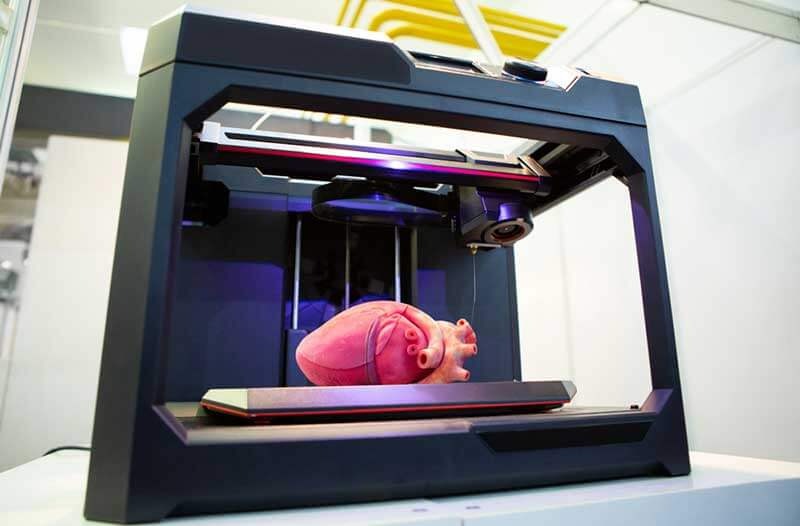Bioprinting: Medicine Molded to You
Authored by: Malia Gasteier

Have you ever wondered what a world would look like in which a printer could create a functioning organ? Considering the first commercial 3D SAL printer was not released until 1988, it's safe to say that the evolution of this process has had a tremendous leap- and fast.
Human hollowed organs are defined as organs that are hollow tubes and/or pouches (such as the intestine or stomach) or that include a cavity (such as the heart).¹ When a hollow organ fails, natural tissue regeneration, or the healing process, is incredibly difficult due to how complex the cells are within these tissue types.²
Because of the lack of natural regeneration, the national shortage of organ donations, and the extremely high cost of organ transplants, the resolutions to the failure of these organ systems is incredibly limited. That is, until the potential medical revolution provided by the 3D bioprinting of organs.
The 3D bioprinting first began in 2003 when Thomas Boland, a professor in the Department of Metallurgy and Materials Engineering at the University of Texas at El Paso, created the first bioprinter. By 2006, the first bioprinted bladder was implanted for human use, with bioprinted blood vessels following close behind in 2009.
Since then, advancements have been made to successfully create numerous organs, including but not limited to: multilayered skin, bones, cartilaginous tissues (ex: ears), vascular networks, and larger organ systems such as the lungs.
This medical breakthrough would eliminate the time that someone would otherwise wait for a donated organ in a life-saving event, increase patient longevity without compromising quality of life, and cut down on the costs of the current transplantation process. Who would have thought that someday a printer could save a life!
References for this blog:
1. Fontanella, Chiara Giulia, and Emanuele Luigi Carniel. “Biomechanics of Hollow Organs: Experimental Testing and Computational Modeling.”Bioengineering, vol. 10, no. 2, Jan. 2023, p. 175. Crossref, https://doi.org/10.3390/bioengineering10020175.
2. Panja, Nabanita et al. “3D Bioprinting of Human Hollow Organs.”AAPS PharmSciTech vol. 23,5 139. 10 May. 2022, doi:10.1208/s12249-022-02279-9
Post a comment